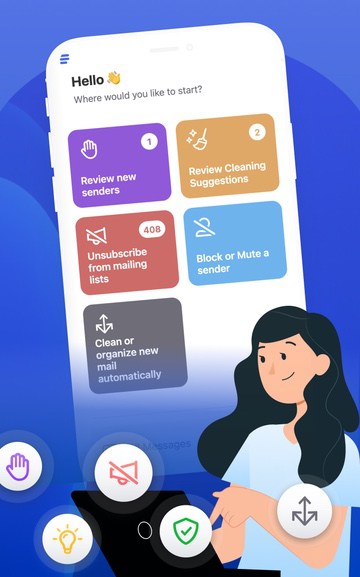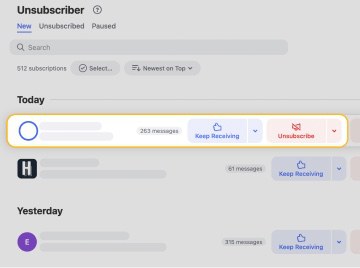What is a Self-Introduction Email?
The intent of a self-introduction email is to tell people who you are. You’ll often do this in combination with a request, such as asking for employment information, advice, or trying to sell something.
The “why” might affect specific elements of your email. However, the structure of an introduction email will stay the same.
How to Write an Introduction Email (In Four Steps)
Introducing yourself in an email follows four steps:
- Writing the subject line.
- Writing the opening.
- Providing more information (or justification) in your email body.
- Wrapping it up with a nice conclusion.
When introducing yourself in an email, it’s important to follow all four steps.
Step One: Write an Engaging Subject Line
The email subject line is arguably the most important part of your introduction. About half of people will decide to open your email based on the subject line. So you need to ensure your subject line is worth opening.
In professional settings, your subject line changes depending on the purpose. For example, if you are writing to inquire about a job, your subject line should mention this. If you are trying to sell something, you might write to mention your potential client’s pain points. Tailor your email to the situation.
All engaging subject lines talk about why the reader should care. Using their name also makes your mail stand out. Here are a few examples:
- Hey [Name], Asking About [Job Opportunity].
- You Don’t Know Me, But [Insert Reason To Care].
- Hey [Name], I Wanted To Introduce Myself As a New Member of Your Team!
- Hey [Name], Do You Want To Increase Your Sales By 50% in Three Weeks?
Step Two: Provide a Direct and Clear Opening
Once you’ve got them reading, you need to respect their time. Don’t take three paragraphs to get to your point. Instead, start talking about the point right away.
For example, if you are inquiring about the job, start with that intent. Tell the reader immediately that you are asking about the job. Also, take the time to express why you would be a good fit.
This also gives you an opportunity to mention a mutual connection. If you’ve worked with someone they know, use that connection. This can be especially useful if you’ve left a good impression.
Here are a few ways your introduction can work:
- Let me introduce myself as [Your Name]. I’m interested in more information about [Mention Job].
- We are both working at [Company], so I wanted to introduce myself since we will be working together.
- Ask [colleague], about my history at [mutual company], they can tell you more about how I work.
Step Three: Provide More Information in the Email Body
The introduction provides clear details for why you emailed. When reading the body of a professional introduction email, your job is to provide further details about why they should care.
The body of many introductory mails might clarify ways to contact you. For example, if you are a new member of a company, you might offer to contact you to break the ice.
If your company is bringing on new clients and you are working with them, you might affirm what questions you can answer for them. It helps to affirm to people how they can use you best.
Here are some phrases you can use throughout the email body:
- I’d love to chat about how we can work together…
- You can reach out to me if you have any questions on…
- I can help provide value by offering you…
- Would you be willing to…
Step Four: Conclude With A Thank You and a Signature
Email conclusions on introductions should wrap things up. You should also take the time to thank the reader for their time. A good and sincere thank you can do you major favors.
The conclusion should affirm methods for how a reader can meet the request you put in the mail. For example, you might include specific contact information (phone number or email address) or meeting times that work for you. If appropriate, be sure to include your job title.
A professional email signature can also help you out. The signature provides a common base for contact information, solidifying your email as though it comes from a company. Emails without signatures are rarely taken seriously.
How To Introduce Yourself in An Email [Example]
Below, you’ll find an example email template you can use for your introductions:
Subject: Hey Tim, I Would Like More Info About The Marketing Director Position
Hello Tim,
My name is Eric Smith. I’m reaching out to you to inquire about the marketing director position. I’ve worked with Bill Adamson, who is running your sales team before on a similar project. Because of this, I think I’d be a good fit for your position.
I just want to clarify some details on the position to learn more about. Perhaps we can talk about it over coffee at the Starbucks on 23rd Avenue? Let me know what works best for you.
You can contact me at 999-999-9999 for a brief chat. I’m available on Wednesday through Friday mornings for a chat later this week or next week. Let me know what works best for you.
I’m looking forward to hearing from you. Thank you for your time.
Talk soon,
Eric Smith
Applicant
eric.smith@business.com
How Clean Email Can Help You Create a Focused Inbox
Waiting for someone to respond to your email can be panic inducing. You might check it continuously, which is a waste of your time. To ensure your inbox is clean and ready to receive email, Clean Email can help.


Clean Email’s Auto Clean feature allows you to set rules for what emails are important. This means when filtering through your inbox, you waste time and effort. Clean Email prevents this by automatically removing these unwanted emails.
You can set specific rules for emails that you don’t want to see. This lets you decide what emails make it through your filters. Establishing these rules for your inbox keeps it tidy, letting you spot important responses to your introduction emails within seconds.
Mailing lists are often hard to unsubscribe from, as their included links don’t always work. Clean Email’s Unsubscriber tool allows you to remove yourself from these lists with no need to go through any lengthy process.


Standard email services aren’t built to easily remove these unwanted emails. For them, there is often no incentive for them to do it, as every email service uses the same formula to attract users.
Clean Email recognizes this, which is why it's built to integrate with all major email services. Regardless of the inbox you use, Clean Email can work with it to make for a better inbox experience. So don’t risk missing a response to your introduction email and try Clean Email for free today.
Email Introduction FAQs
What If I Forget An Email Attachment?
If you missed an attachment in your introduction email, don’t panic. Instead, follow up with a second email including the attachment alongside an apology for the inconvenience. To avoid this in the future, create a checklist for your email introduction process.
Should I Add an Email Signature To a Formal Email?
Yes, an email signature is an excellent part of any formal email. Be sure your signature looks professional. Use standard fonts and high-quality images in your signatures.


